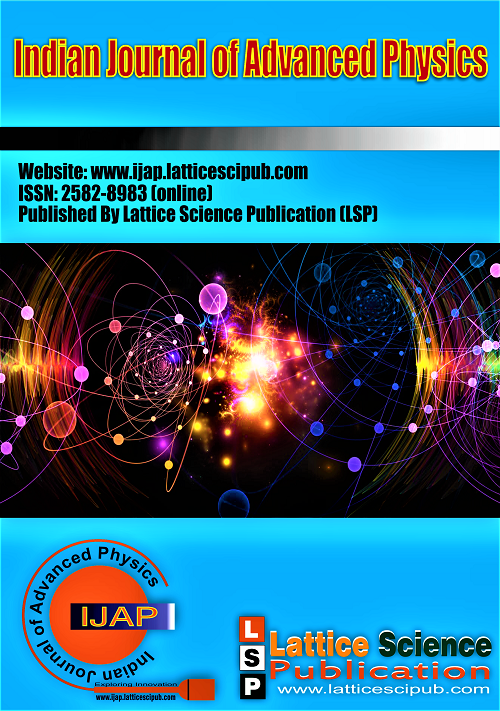Unification of the Fundamental Equations in Physics: A Single Functional Relation Between Mass and Volume
Main Article Content
Abstract
Since the inception of classical physics, scientists worldwide have continually introduced new equations. Notably, the three fundamental physical variables—mass, time, and temperature—have consistently played central roles in these formulations. However, these variables are often treated as ‘abstract’ quantities, particularly because their physical dimensions, about length (L), have seldom been explicitly addressed. In this research, a novel thermodynamic approach has been employed to investigate the dimensional relationships between time (t), mass (M), and temperature (T) and length (L). The new dimensions revealed for these variables have the potential to reshape both modern and classical physics. The equation mass = density × volume holds profound significance in physics. Density, in this context, serves as an indirect measure of a material’s cohesiveness, or orderliness; among materials of varying density, the one with the greater density will house more molecules within a fixed volume, and is thus more cohesive. Density is, therefore, an index of order. Conversely, increasing the volume of a given mass—such as by introducing air voids or foams—decreases density, thereby diminishing cohesiveness and increasing disorder or randomness. Density, then, is the “creator” of order, while volume gives rise to disorder or randomness. Thus, mass, being the product of density and volume, is inherently a composite variable that embodies both order and disorder. This article demonstrates that the contribution of density (order) outweighs that of volume (randomness), making mass, as a hybrid parameter, primarily indicative of order. Every physical, mechanical, or chemical process is fundamentally an interplay of order and disorder, manifested in the equation mass = density × volume. Core principles of physics—including the laws of motion, mass-energy equivalence, ideal gas behaviour, wave-particle duality, the uncertainty principle, and the quantum mechanics of microscopic particles—can all be understood as manifestations of these order–disorder phenomena. Consequently, all fundamental equations in physics may ultimately converge upon, or be unified with, the relation mass = density × volume. Such unification or convergence can only be fully understood once the three principal variables—mass, time, and temperature—lose their abstraction and are properly embodied. In this research, we offer a foundational embodiment for these variables, opening new horizons for modern physics.
Downloads
Article Details

This work is licensed under a Creative Commons Attribution-NonCommercial-NoDerivatives 4.0 International License.
How to Cite
References
Atkins, P., De Paula, J., & Keeler, J. (2017). Atkins’ Physics (11th ed.). Oxford University Press. https://books.google.co.in/books/about/Atkins_Physical_Chemistry.html?id=3QpDDwAAQBAJ&redir_esc=y
Rakshit P C (2021). Physical chemistry (7th ed.). Sarat Publishing House. https://archive.org/details/dli.scoerat.3576elementaryphysicalchemistry





